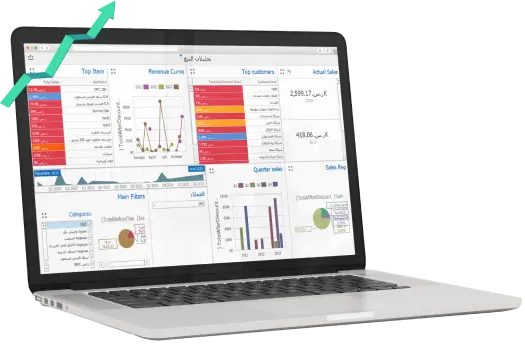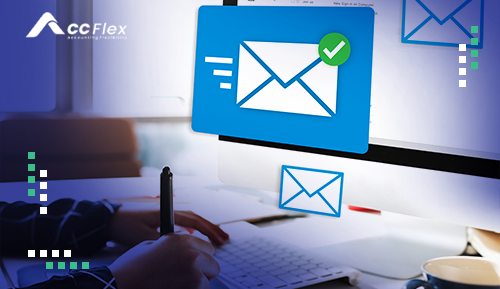Accounts payable accountant or accounts payable management if the company’s volume of transactions is large, is one of the most important roles in finance department because it is associated with inventory control which is the backbone of cost accounting and also accounts payable are associated with tax accounting and also cash payments
Accounts payable are divided into domestic accounts payable and foreign accounts payable (Letter of Credits).
The most important accounts payable accountant duties and responsibilities (local procurement)
1- Following up on the accounts payable and purchasing documents cycle and in detail.
2- Preparing journal entries for suppliers’ accruals and payments.
3- Preparing supplier registration that includes all the data related to the supplier.
4- Following up supplier's indebtedness by accounts payable (AP) aging and following up payment dates.
5- Monitoring the purchase orders, the quantities actually received, and the remaining quantities.
6- Tracking value-added tax & withholding and collection tax.
7- Preparing and reviewing the account payable trial balance monthly.
8- Preparing reports related to suppliers and procurement.
9- Reconciling accounts payable at the end of each fiscal period.
10- Preparing a financial analysis of the accounts payable at the end of each fiscal period.
11- Following up service providers and contractual obligations to the company.
Accounts Payable and Purchasing Documents Cycle
The corporate procurement system varies from one company to another in the sense that in some companies the purchasing department has a procurement budget in every fiscal period and some specific items and quantities must be purchased at specific dates and some other companies do not have budgets and the purchase is made when the inventory level reaches the reorder point whatever method is used, the documents cycle begins with the determination of requirements that sent by the planning and controlling department and warehouse by its material requirements, and then the purchasing department sends a purchase requisition, and the purchase requisition contains the description of the items and their delivery dates and then the suppliers send quotations by quantities, specifications, prices, delivery locations and dates, the payment period, and whether it is in cash or by postdated check according to the agreement and the purchasing department when it selects the best price quotation after the approval of the senior management then the purchase order is sent after signing up by the senior management and finance department also, agreeing to purchase from this supplier (the finance department also participates because its role will be to pay to the supplier on the date specified in the purchase order)
The supplier then sends the goods, the role of the company's quality management is to inspect the materials and products and ensure their quality and compliance with the company's conditions or not, and then make an inspection report
Then the role of the warehouse comes of the receipt of the received quantities from the supplier and makes a receiving voucher the quantities actually received from the supplier and also signs to the supplier on a receiving voucher that is related to the supplier stating the company's receipt of the goods
The stock keeper sends the original receiving voucher to the accounts payable department of the company and the accounts payable accountant compares the purchase order with the supplier’s invoice with the inspector record with the receiving voucher and makes sure that they are all matched (for the receiving vouchers supposed to be the original and 3 copies- the original receiving voucher to the accounts payable and a copy in the cost center and a copy in a file for the stock keeper to record in the item card and a copy that is kept in the books for reference at any time) then match it with the received invoice from the supplier and review the assembly invoice and make sure to separate the VAT (if any)
It is necessary to compare the received quantities in the purchase order with the invoice properly and make sure that they are equal the quantities in the receiving voucher received from the stock keeper and in practical reality the quantities may be less or more due to a set of reasons which are
1- The supply can be done more than once, for example, the purchase order may be a ton of sugar, and the supplier brings it on 3 times, for example, each time at 300 kilos, and thus the role of the accounts payable accountant is that he follows up the quantities actually received with the purchase orders and for this reason, it must be the original of the purchase order with the finance department to tightness control of purchase orders
2- It is possible that the quantities actually received from the supplier may be greater than the quantities in the purchase order and this may be due to the nature of the material itself and in this case, the increase is approved by the general manager (There are cases specific to certain industries)
There are some important things about the documents cycle topic are that the stock keeper only has a role of receiving the quantities and making receiving voucher only the received quantities meaning that the stock keeper has no relationship to the purchase invoices as is the case in sales and accounts receivable so his role is only the delivery of finished products to customers and also in accounts payable his role of receiving raw materials, spare parts or packaging, meaning the stock keeper role of receiving and delivery only (receiving raw materials from suppliers and delivering products to customers only)
For purchase invoices, the supplier is alerted to that a representative by him submits them to the company's accounting department
And we ask the question, how the stock keeper receipts from the supplier and he does not have any details of the receipt of the goods from the supplier
Some finance departments that overcome this by having the stock keeper have a copy of the purchase order, but there are no prices in which the quantities are only to be received to be aware of the quantities received for him and he prepares the warehouse for the received goods and in some companies, it is possible to inform the stock keeper of the received quantities to him via e-mail
Some finance departments, the stock keeper is informed that there are receiving items to him today from the supplier xxx and he is not informed of the received quantities until he actually receives and count of the received quantities because there are some stock keepers who do not receive the items properly but it is possible to receive it only without counting the items properly
In practical reality, some things differ from one company to another, and it is important to know the nature of the cycle and how to adapt it to the practical reality
Of course, the accounts payable accountant deals with more than one types of purchases, and also warehouses in a sense
There are raw materials purchases, there are purchases of packing and packaging materials, and there are spare parts purchases, as well as various warehouses there are spare parts warehouse, raw materials warehouse, packing and packaging warehouse, for example, and of course, this is important in accounting treatment for purchases and including them within their inventory type.
Accounts Payable Documents Cycle
As with accounts receivable, accounts payable, which is that the payment is paid to the suppliers according to the credit period granted to the company by the supplier and the credit period will vary from one supplier to another according to the company’s volume of transactions with the supplier and according to the agreement in the beginning, of course, this is for the supplier credit and the credit period will be, for example, 30 or 60 days after the receipt of goods, if the invoice was received, for example, on 10-10, the payment will be, for example, after 30 days, it will be 9-11, and so on
Payment to the supplier, whether it is a check or a transfer to the supplier account, must be attached to all the original documents such as
1- Purchase Order.
2- Receiving Voucher.
3- Inspection Report.
4- Invoices.
5- The supplier statement of account showing the debt, and it is possible to print the accruals of the debt periods, which are in existence
When setting up a check for the supplier, the person who will sign the check must have all the original attachments in front of him to prevent manipulating and repetition of the payment again, and that the invoices are stamped and when preparing an accrual for the supplier, the attachments are pictures, but payment journal entry must be the original documents, and when receipting the supplier to the check, signing for its receipt and also be received note receivable from the supplier of this check and to tighten controls on payments and there is evidence of the receipt of the supplier of the check, a check must be crossed and be the company name until it is paid in its date and also the crossed check is not cashed, but a deposit is made in the company's account only
In the case of cash purchases, which is done through the company’s purchasing representative, which is done through a petty cash system, its idea is that the representative has a petty cash, he buys cash purchases in small amounts
Then he liquidates the petty cash and invoicing by the amounts that have been paid, and the purchasing representative must prepare various price quotations to prevent manipulation
Supplier Registration
An accounts payable accountant must have a supplier registration with a copy of the trade register of each supplier, a certificate of registration for value-added tax in and the tax card of the supplier, and of course, if he is on the prepayment register, the supplier will prepare a certificate that he is on the prepayment register and that he is exempt from the withholding tax
If he isn't on the prepayment register, you deduct 1% for supplies, 3% for services and 5% for liberal professions
The supplier registration is very important because it contains all the documents for the supplier, which can be referenced at any time to ensure the validity of the data contained in the invoice.
Journal Entries and Accounting Treatment
Suppose that the accounts payable accountant received an invoice from a supplier, the value of items is 150,000 before tax
There is a value-added tax (VAT) rate of 14% amounting 21000
The first thing that an accounts payable accountant does is to review the purchasing documents cycle, and after making sure that it is correct, he begins to review the invoice line items and verify the amounts in it, and also review the value-added tax calculation and that it is after the trade discount given by the supplier (if any)
The accounts payable accountant deducts 1% from the supplier invoice 1% for supplies, 3% for services and 5% for occupations
The deduction will be before the value-added tax calculation and the amount of the tax deducted which is provided to the Tax Authority every 3 months
Creating a debit note for supplier
If the supplier had a tax certificate that he is on the prepayment register, in which case did not be deducted from him
The amount of the tax deducted from the supplier = 150,000 * 1% = 1500
The journal entry shall be as follows as purchasing raw materials
|
Account |
Debit |
Credit |
|
Raw Materials |
150,000 |
|
|
VAT |
21,000 |
|
|
Withholding tax account |
1500 |
|
|
Accounts Payable- Al-Salam company |
169500 |
It is called, accrual
When paying to the supplier, suppose that by a postdated check and the postdated check is its due date after a month, for example, in this case, the check is made by the name of the supplier and the check is crossed, the check is not issued before its date
The journal entry is as follows
|
Account |
Debit |
Credit |
|
Accounts Payable- Al-Salam company |
1695000 |
|
|
Notes Payable |
|
1695000 |
The notes payable are clearing account and when the supplier issues the check from the bank, a journal entry is created
|
Account |
Debit |
Credit |
|
Notes Payable |
1695000 |
|
|
Bank |
|
1695000 |
An analysis is made the notes payable account balance and the follow-up to this account is very important in terms of tracking the due dates for checks and also, is the balance in the bank available to cover these checks or not
The deduction in accounts payable is both a trade discount on the invoice, in this case, no journal entries are created and the tax is calculated after the deduction
There is another case that the supplier gave the company a discount as a result of the company's withdrawals were high during the period or whatever reason, the discount, in this case, the journal entry is as follows
|
Account |
Debit |
Credit |
|
Accounts Payable |
XXX |
|
|
Discount Received |
|
XXX |
In the case that the company doing a return to supplier, the journal entry is as follows
|
Account |
Debit |
Credit |
|
Accounts Payable |
XXX |
|
|
Withholding tax account |
XXX |
|
|
Raw Materials & Spare Parts |
XXX |
|
|
VAT |
XXX |
Explanation of the journal entry is very important, in which all details of journal entry must be typed for it to be referenced at any time










